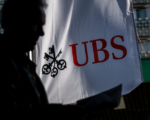Hedge Fund Retreat Transforms Cocoa Markets Amid Price Surge

A record-breaking surge in global cocoa prices this year has exposed a dramatic shift in financial markets underpinning the cost of chocolate: hedge funds, once key players in cocoa futures trading, have largely exited the market. Their withdrawal has reshaped cocoa markets, driving unprecedented volatility and straining liquidity.
Cocoa futures, traded on exchanges in London and New York, are vital for determining the price of cocoa beans, influencing confectionery costs worldwide. However, by mid-2022, hedge funds—speculative investors that use pooled private capital—began scaling back their activity in cocoa markets. This retreat accelerated in 2023 due to heightened price swings, which increased trading costs and eroded profitability.
The market turmoil was fueled by adverse weather conditions and crop diseases in top cocoa-producing nations Ivory Coast and Ghana. These challenges drove cocoa prices to a record high in February, surpassing the previous peak set in 1977. Hedge funds, which peaked at a 36% share of the market in May 2023, reduced their presence to just 7% by late May, their lowest participation in over a decade.
Razvan Remsing of Aspect Capital, a $9.3 billion London-based hedge fund, explained that extreme volatility compelled the firm to reduce its exposure to cocoa futures. Aspect trimmed its cocoa holdings from nearly 5% of its portfolio in January to under 1% by April. Lawrence Abrams of Absolute Return Capital Management noted that the collateral required to trade cocoa futures skyrocketed, increasing costs for speculators.
The hedge fund exodus had cascading effects on the market. Liquidity—the ease of buying and selling—plummeted, leading to wider bid-ask spreads and amplified price swings. Daily price fluctuations reached $800 in May, up 15 times from the previous year, while volatility hit record highs. As a result, traders and brokers faced significant challenges executing large trades without distorting prices.
The cocoa market’s altered dynamics prompted some industry players to seek alternatives to futures contracts. Macquarie, an Australian investment bank, reported increased demand for over-the-counter products, which offer narrower price protection. However, such instruments have limited use compared to traditional futures contracts.
Major trading houses and cocoa producers also faced steep losses as Ghana delayed delivery on nearly half of its cocoa harvest for the October 2023 to September 2024 season. This disruption forced traders to liquidate positions at significant losses, compounding market instability.
Despite some hedge funds returning to the market, their collective share of cocoa trading remains well below previous levels. Short-term investors, including day traders, have partially filled the gap but lack the liquidity-providing role of hedge funds. Brokers have nicknamed these transient participants “cocoa tourists” for their fleeting involvement in the market.
The fallout from the hedge fund retreat extends to chocolate makers, particularly small and medium-sized businesses. Volatile prices and higher costs have forced many to pass expenses to consumers, reduce product sizes, or shutter operations.
For cocoa-producing nations like Ivory Coast and Ghana, the turbulence in futures markets has profound implications. These countries depend on stable futures markets to hedge income and protect farmers from price fluctuations. The market’s current volatility underscores the risks of relying heavily on speculative financial actors.
As cocoa markets navigate their transformed landscape, the episode highlights the systemic importance of hedge funds and their outsized influence on global commodity markets.





















